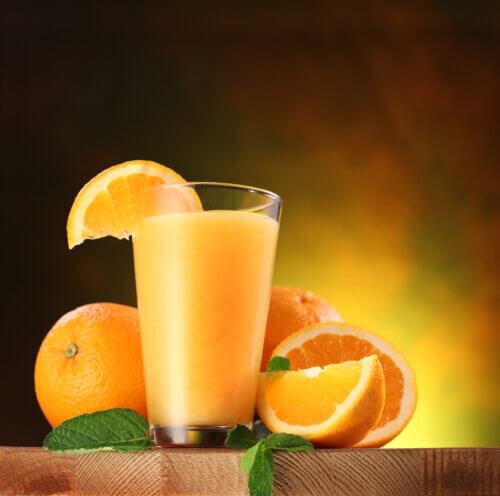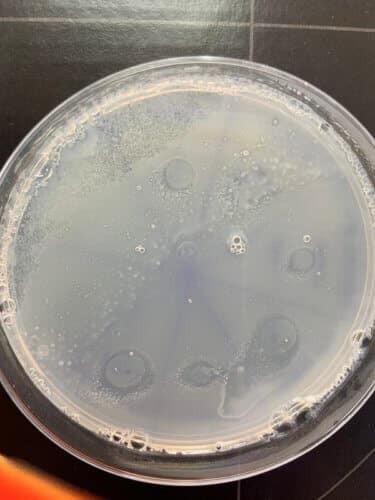Technion students harnessed viruses found around fruit trees to prevent spoilage of the juices - a phenomenon whose damages are estimated at tens of millions of dollars a year. The development earned the students, studying in the Faculty of Biotechnology and Food Engineering and the Faculty of Biology, the first prize in the competition in the "MicroBiome-Push" project within the framework of "Food Solutions" - an educational program in the European consortium EIT-FOOD

A group of students from the Faculty of Biotechnology and Food Engineering and the Faculty of Biology at the Technion won first place in an international competition held as part of the European project EIT FOOD. The students harnessed bacteriophage (a virus that attacks bacteria) to prevent spoilage of fruit juices - a phenomenon whose damages are estimated at tens of billions of dollars a year. Prof. Marcel Khaluf, Acting Dean of the Faculty of Biotechnology and Food Engineering She said that "international projects like this are the essence of the faculty and its way of educating the future generation to think outside the box, to entrepreneurship and to expand the knowledge that we can provide in the classroom."
The international competition was held as part of the "MicroBiome-Push" project - part of the "Food Solutions" educational program. This competition aims to solve problems in the food sector by bringing together companies from the industry (Pepsico, Portos and Agricullos), and undergraduate, graduate and postgraduate students from 4 universities: the Technion, the University of Turin in Italy, the University of Reading in the UK and the University of Helsinki in Finland. Nine student groups competed in the competition, two of them from the Technion.
The two groups from the Technion chose the challenges set by the global company PepsiCo: the first, a solution to the spoilage of fruit juices and the second, the utilization of the remaining potato skins in the production of chips. The groups were accompanied by four mentors from the Faculty of Biotechnology and Food Engineering: Prof. Yoav Livni who led the Technion's activities in the project, Prof. Hazi Kashi, Prof. Avi Spigelman and Prof. Uri Lazmes. According to the moderators, "the two Israeli teams did an amazing job, and despite the limitations of the Corona virus, they managed to produce original effective solutions, and more than that - to present to the companies the feasibility of the ideas and the business potential inherent in them."
In the winning group, "The Microbes", members are Itzik Engelberg, Alon Romano, Lihan Mashiach and Rachel Biton. In the second group from the Technion, Biomy, members are Omer Sabah, Yuping Cao, Or Shapira, Michael Bozaglo and Lior Kaufman.
The winning group chose to deal with the acute problem of spoilage of natural juices - a phenomenon whose damages in the United States alone are estimated at about 32 million dollars a year. The culprit of the juice spoilage is ACB, or in its full name Alicyclobacillus acidoterrestris. This bacterium, found in the soil where the fruit trees grow and in all parts of the tree itself, is not dangerous to humans, but it releases a natural substance called guaiacol into the juice, which spoils its taste and smell. This phenomenon occurs in a wide variety of juices - oranges, peaches, mangoes, pears, grapes, tomatoes and more - and causes the loss of large amounts of juices and huge economic losses.
During evolution, the bacterium developed a high resistance to hostile environmental conditions, which allow it to survive even in the processing processes of the juice: cleaning, squeezing, pasteurization and filling. For the most part, pasteurization is effective in destroying bacteria that are dangerous to health or damage the quality of the juice, but not in the case of ACB. Since it is impossible to heat the juice to higher pasteurization temperatures or for a longer time without damaging its quality and nutritional values, the PepsiCo company looked for a creative solution that would prevent this harmful phenomenon.
"Since the problem stems from a natural source - a bacterium that lives in the soil - we looked for a solution from a natural source," explain the members of the group, the doctoral students Alon Romano and Itzik Engelberg. "Ultimately, nature is a billion-year-old 'laboratory', and we assumed that solutions developed through evolution could also be used as a tool for treating the ACB problem in the food industry."
After many searches and analyses, the decision was made on a bacteriophage - a virus that attacks bacteria naturally and in a very specific way. Many bacteriophages exist in nature, and after extensive research, the research group was able to isolate and locate a bacteriophage that destroys the harmful bacteria. Not only that, even in its low dose it effectively eliminates the bacteria; He does so in a way selective Therefore, it is safe to use and does not have any negative effect on human health.

The members of the winning group explain that the competition was held under the "MicroBiome Push" project, as it focused on solving challenges originating from the microbiome - the population of microbes in the given environment. The microbiome includes bacteria (Bacteriome), fungi (Mycobione) and viruses (Virome), and the solution that won the competition actually recruits a specific virus from the phytosphere (the microbiome of the plant and its environment) to fight a specific bacteria from that environment. The fact that this is a natural and cheap solution, which does not even involve genetic engineering, is expected to accelerate the application of the technology in juices and reduce the need for preservatives. Furthermore, The addition of the virus to the juice does not harm it in terms of kosher Jewish (kosher) and Muslim (space).
The second group from the Technion, Biomy, also faced a difficult challenge and developed the "PotatALL" concept, which includes a number of creative solutions for handling the remaining potato skins in the potato chips production process. The members of the group presented a process for producing raw material for the production of biodegradable packaging that preserves the quality of the environment, as well as a dip made from potato skins. This comprehensive and creative solution was also praised by the competition judges. This dip, according to their intention, will be served in small packages like ketchup, next to the chips, which will be packaged in the biodegradable package prepared from the skins. This solution leads to a perfect utilization of the potatoes while reducing the damage to the environment.
In the picture: The circles on the surface of the food substrate are called plaques and they indicate the activity of bacteriophages - viruses that multiply inside a bacterial cell and cause it to explode while dispersing thousands of viruses that continue and spread from it. The plate is coated with a bacterial culture and hence the murky and bright yellow color - the bacterial culture that spoils the fruit juices and a drip of the phage results in the explosion of the bacterial cells in this area.
More of the topic in Hayadan:
